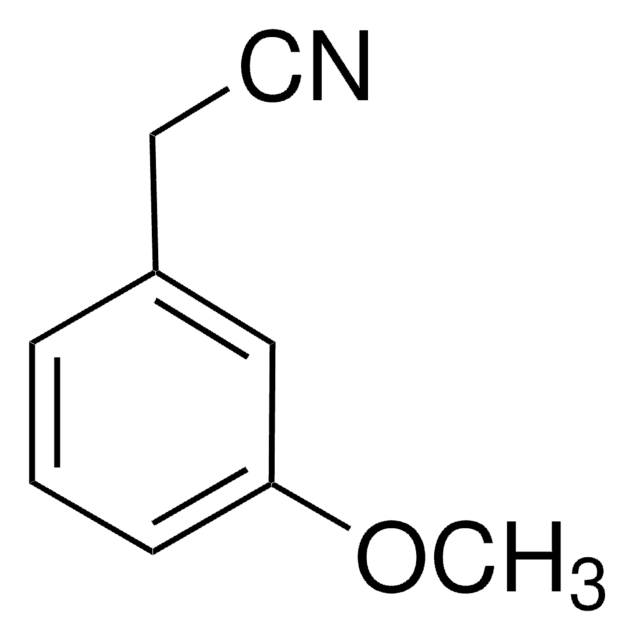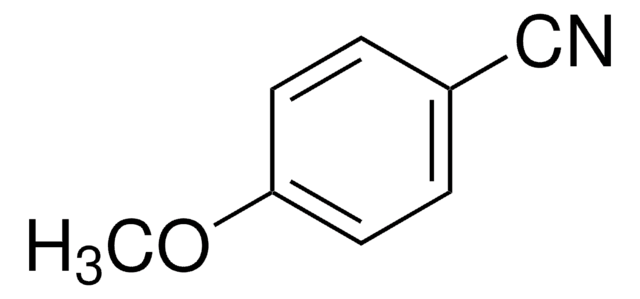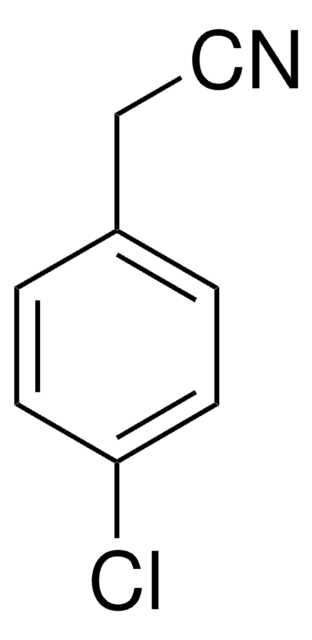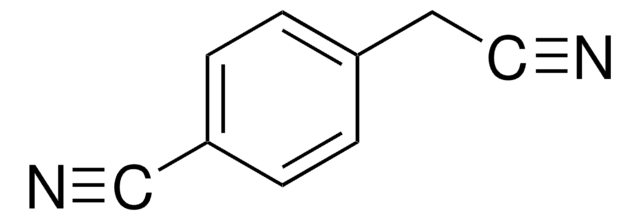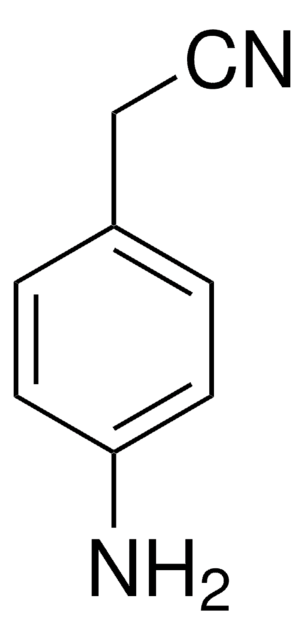169986
4-Methoxyphenylacetonitrile
97%
Synonym(s):
4-Methoxybenzyl cyanide
Sign Into View Organizational & Contract Pricing
All Photos(1)
About This Item
Linear Formula:
CH3OC6H4CH2CN
CAS Number:
Molecular Weight:
147.17
Beilstein:
509162
EC Number:
MDL number:
UNSPSC Code:
12352100
PubChem Substance ID:
NACRES:
NA.22
Recommended Products
Quality Level
Assay
97%
refractive index
n20/D 1.531 (lit.)
bp
286-287 °C (lit.)
density
1.085 g/mL at 25 °C (lit.)
SMILES string
COc1ccc(CC#N)cc1
InChI
1S/C9H9NO/c1-11-9-4-2-8(3-5-9)6-7-10/h2-5H,6H2,1H3
InChI key
PACGLQCRGWFBJH-UHFFFAOYSA-N
Looking for similar products? Visit Product Comparison Guide
General description
4-Methoxyphenylacetonitrile has been isolated from the sponge Psammaplysilla purpurea.
Application
4-Methoxyphenylacetonitrile was used as starting reagent in the synthesis of :
- 2-(1-cyano-1-(2-methoxy)phenyl)methylidene-3-phenylthiazolidine-4,5-dione
- 2-(1-cyano-1-(4-methoxy)-phenyl)methylidene-3-phenylthiazolidine-4,5-dione
- α-cyanostilbenes
Signal Word
Danger
Hazard Statements
Precautionary Statements
Hazard Classifications
Acute Tox. 3 Oral - Aquatic Chronic 3
Storage Class Code
6.1C - Combustible acute toxic Cat.3 / toxic compounds or compounds which causing chronic effects
WGK
WGK 3
Flash Point(F)
242.6 °F - DIN 51758
Flash Point(C)
117 °C - DIN 51758
Personal Protective Equipment
dust mask type N95 (US), Eyeshields, Gloves
Choose from one of the most recent versions:
Already Own This Product?
Find documentation for the products that you have recently purchased in the Document Library.
Customers Also Viewed
Brominated benzeneacetonitriles, the dibromotyrosine metabolites from the sponge Psammaplysilla purpurea.
Venkateswarlu Y and Chavakula R.
Journal of Natural Products, 58(7), 1087-1088 (1995)
Uwe Albrecht et al.
Bioorganic & medicinal chemistry, 13(14), 4402-4407 (2005-05-21)
2-Alkylidenethiazolidine-4,5-diones were prepared by novel one-pot cyclizations of arylacetonitriles with isothiocyanates and ethyl 2-chloro-2-oxoacetate. The products show antibiotic activity against the Gram-positive bacteria Bacillus subtilis and Staphylococcus aureus.
Byung Seok Moon et al.
Bioorganic & medicinal chemistry, 17(9), 3479-3488 (2009-04-11)
We have investigated halogen-substituted non-steroidal estrogens with selective binding affinity for the estrogen receptor beta (ERbeta that might be used for imaging the levels of this ER-subtype in breast tumors by positron emission tomography (PET). Based on diarylpropionitrile (DPN, 1a)
Our team of scientists has experience in all areas of research including Life Science, Material Science, Chemical Synthesis, Chromatography, Analytical and many others.
Contact Technical Service

